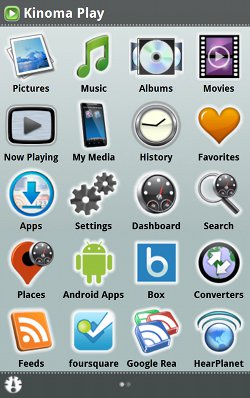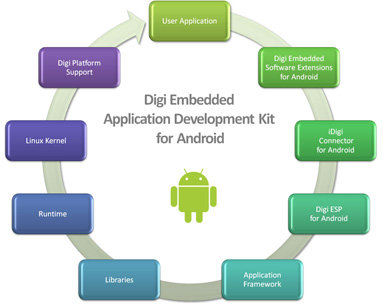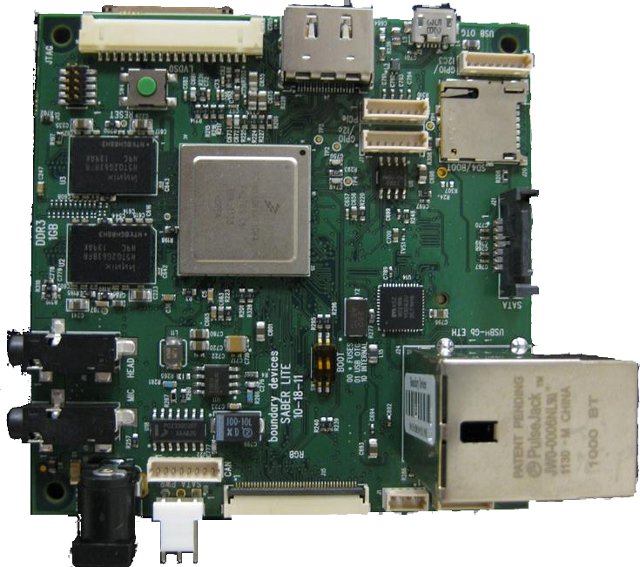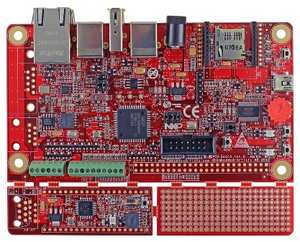Google has released revision 17 of the SDK Tools and the Eclipse plugin. This release brings new features and bug fixes in for Lint static checker, the build system, and the emulator among other things. Here’s what’s new for Lint in r17: Lint API Check – Added check for Android API calls that require a version of Android higher than the minimum supported version. You can use the @TargetApi annotation to specify local overrides for conditionally loaded code. New Lint Rules – Added over 40 new Lint rules for a total of over 80, including checks for performance, XML layouts, manifest and file handling. Ignoring Lint Warnings – Added ability to suppress Lint warnings in Java code with the new @SuppressLint annotation, and in XML files with the new tools: namespace prefix and ignore attribute. New Eclipse Lint UI – Improved HTML and XML reporting and Eclipse integration. Improvements to […]
98 Raspberry Pi Boards Left for Qt Developers
In November 2011, the Raspberry Pi foundation announced that Nokia purchased codes for 400 boards from the 1st 10,000 batch, in order to give them away to selected developers that are interested in helping develop and test Qt 5 on the Raspberry Pi. This developer program is called QtonPi. The surprising part if that they struggle to distribute all those boards. Although to date 425 people have been selected, only 302 are currently eligible to receive a board because over 100 developers did not provide their details to receive the free Raspberry Pi board namely: Their full name The link to their wiki user profile. The area of the “QtonPi Accepted Page” where they are listed. The country where the board will be shipped If by chance, you are reading this blog, have been selected but you can’t see “OK” or “CODE SENT” next to your user ID, you should […]
Marvell Releases Kinoma Play for Android and Kinoma Create SDK
Marvell has just announced the availability of the preview release of Kinoma Play for Android which includes a suite of 50 apps enabling digital media, social networking, location, and search. It’s somewhat surprising that a silicon vendor releases a processor agnostic software for Android, but here’s the reasoning behind it: “Marvell is investing in our Kinoma software platform because we understand the importance of great software to the success of our customers. Our vision of the Connected Lifestyle guides our product development. Kinoma Play truly shows the power of that Connected Lifestyle,” said Weili Dai, Co-Founder of Marvell. “I believe our customers can now build on Kinoma to bring increased value to their own products. Android is just the first stop. We’re working to bring Kinoma to additional Marvell-powered devices.” Kinoma Play Kinoma Play includes 5 dashboard: Play shows near real-time information from every Kinoma app with news, social networks, […]
Digi International Unveils Embedded Application Development Kit for Android
Digi International has released its Application Development Kit for Android (the world first Android embedded application devkit according to the company) at Embedded World 2012. This Development Kit is comprised of both software and hardware components. The software development kit (SDK) includes drivers and Digi software extensions to create Android-based applications on embedded platforms while eliminating tedious driver development work. The kit also includes one of 2 Digi Wireless modules based Freescale i.MX51 (ConnectCore Wi-i.MX51) and i.MX53 (ConnectCore for Wi-i.MX53). The complete Digi Android development kit includes: Quick start guide Digi Application Development Kit for Android CD/DVD Documentation and development board schematics ConnectCore Wi-i.MX53 module – 1 GHz Freescale i.MX53, 512 MB NAND Flash, 512 MB DDR2, -20 to +70° C. 7″ WVGA LCD panel with touchscreen Digi JumpStart Kit development board: 3 serial ports (1 x RS-232/422/485, 1 x RS-232 Tx/Rx, 1 x TTL) VGA and HDMI 1.3 video outputs […]
Boundary Devices Unveils Nitrogen6X Freescale i.MX6 Development Kit (aka i.MX6q Sabre Lite)
Arrow Electronics and Boundary Devices have launched the Nitrogen6X, a low cost development kit based on Freescale i.MX6 quad-core cortex A9 processor. Here are the technical specifications of the Nitrogen6X board: Quad-Core ARM Cortex A9 processor at 1GHz (i.mx6Quad) 1 GB of 64-bit wide DDR3 @ 532MHz Board Dimensions: 4.5″ x 3″ 2MB Serial Flash Three display ports (PRGB, LVDS, HDMI) Parallel camera port with OV5642 Interface Multi-stream-capable HD video engine delivering 1080p60 decode, 1080p30 encode and 3-D video playback in HD Superior 3-D graphics performance with quad shaders for up to 200 Mt/s Separate 2-D and/or Vertex acceleration engines for an optimal user interface experience Serial ATA (SATA) Dual SDHC card slots PCI express port Analog (headphone/mic) Audio 10/100/1G Ethernet with Power over Ethernet support 2 RS-232 Serial ports 10-pin JTAG interface I2C/GPIO/SPI 3 High speed USB ports (2xHost, 1xOTG) CAN port TiWi 802.11 b/g/n WiFi+BT optional Supports Android […]
Qualcomm Releases Augmented Reality Vuforia SDK 1.5 for Android and iOS
Announced in January, Vuforia is the new name of Qualcomm’s Augmented Reality platform. Qualcomm has just announced the commercial release of Vuforia SDK 1.5 for Android and iOS. Applications built using this SDK can now be distributed and promoted on the Android Market and Apple App Store. Developers can also build 3D AR application using Qualcomm’s extension for the Unity 3 cross-platform game engine. The Vuforia SDK 1.5 supports Android devices running on Android 2.2 and above, as well as the iPad 2, iPhone 3GS, iPhone 4 and iPod touch (4th Generation) running iOS 4 and above. Vuforia SDK 1.5 brings the following features and improvements: Ability to swap datasets at runtime: You no longer have to upgrade your app to change the target dataset, and you can now build AR experiences that work on a large number of images. If your app needs to augment more than 60 images, […]
Embedded Artists and NXP Release The First ARM Cortex-M Android Open Accessory Development Kit
Embedded Artists and NXP introduced the TN-20764, a board that can be used with Android Open Accessory Application (AOAA) development kit that features 2 NXP Cortex-M MCUs, at Embedded World 2012. The board includes Ethernet, CAN and IEEE 802.15.4 interfaces as well as a remote CAN node, enabling designers to develop accessories for consumer applications, as well as home, building and industrial automation applications requiring different types of connectivity. There are already Arduino and PIC-based Android Open Accessories, but this board is the first AOAA kit based on ARM Cortex-M micro-controllers. As mentioned above, the board features 2 Cortex M micro-controllers: The NXP LPC1769, a 120-MHz Cortex-M3 based MCU, provides the interface to the Android mobile device via its full-speed USB transceiver . The LPC1769 also includes 512 KB flash and 64 KB on-chip SRAM, an Ethernet MAC, a CAN 2.0B controller, an 8-channel, a 12-bit ADC, a 10-bit DAC, […]
Tizen Releases Beta Source Code and SDK
Back in January, Tizen preview SDK and source code was made available. Today, Tizen has released the beta source code and SDK. Here are the main changes compared with the code preview: SDK support for Windows, in addition to Ubuntu SDK source code is now available Tizen Web UI framework extends jQuery Mobile to make developing web applications easier with optimized widgets. Tizen Web API provides more features, such as setting an alarm, accessing media contents, retrieving system information, and more. Tizen uses a bootloader based on U-Boot. The Tizen team emphasizes that this version is Beta and that it is not yet designed for use to create production applications. Since Windows is now supported, the development machine requirements have slightly changed as follows: Ubuntu 10.04/10.10/11.04/11.10 32-bit, Windows XP SP3/7 32-bit (Mac version will be available soon) At least dual-core 2 GHz CPU (recommend VTx supported by CPU) At least […]








